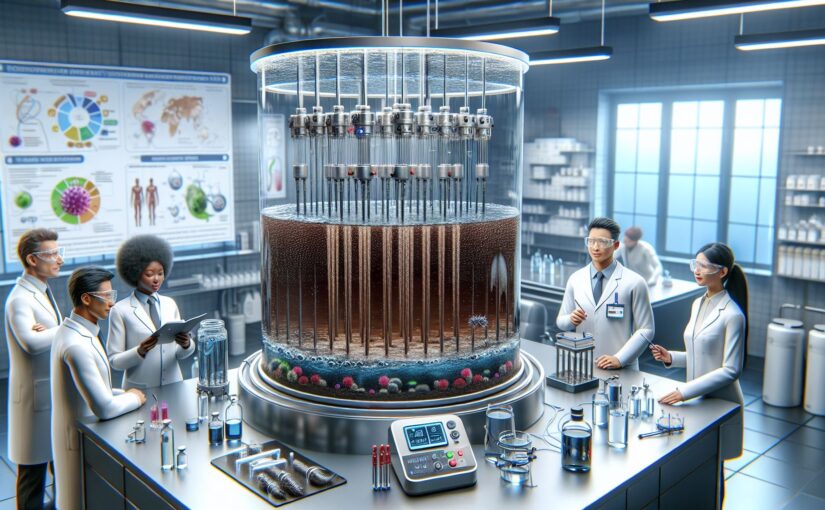In an increasingly resource-conscious world, the pursuit of sustainable, renewable energy has never been more imperative. Astoundingly, one potential solution exists where you’d least expect it: in wastewater. Scientists have developed technologies which harness the power of bioelectricity generation from wastewater, turning waste into watts.
The Magic of Microbes
The key actors in this process are specialized bacteria referred to as electricigens. These remarkable microbes metabolize organic matter present in wastewater, and during this process, they release electrons. It’s these electrons that can be harvested to generate electricity [^1^].
The Process: From Waste to Watts
The process of generating electricity from wastewater takes place within the confines of an innovative device known as the Microbial Fuel Cell (MFC). Here’s a simple breakdown of how it works:
- The wastewater, shedding organic matter, is placed in the MFC’s anaerobic (oxygen-free) anode chamber.
- The electricigens within the anode chamber consume the organic matter.
- In the course of this metabolic process, electrons and protons are produced.
- The electrons move towards the cathode through an external circuit – creating an electrical current.
- At the same time, protons pass through a proton exchange membrane to the cathode.
- Eventually, electrons, protons, and oxygen in the cathode chamber combine to form water.
In summary, from what is essentially pollution, the ingenious MFC technology generates electricity, and concurrently, helps treat wastewater [^2^].
The Benefits and Challenges
Bioelectricity generation cleans the environment, provides renewable energy, and reduces water treatment costs. However, current MFCs are not without challenges. Achieving high efficiency and scalability are among the crucial issues needing attention. Nevertheless, with continued research and technological development, the future of wastewater-to-energy looks bright [^3^].
Embarking on a Cleaner Path
The possibility of sewage treatment plants becoming power stations is fascinating. Generating bioelectricity from wastewater is not just about pursuing renewable energy; it’s also about approaching wastewater not as a problem, but as a beneficial resource. As the technology matures, our attitude towards wastewater might just turn from disgust to appreciation.
Moving on, we, as a society, need to invest more in research, development and deployment of these innovative, eco-friendly technologies. As the old adage goes, where there’s muck, there’s brass. And what’s better than turning waste into valuable resources!
[^1^]: Logan, Bruce E. (2009) “Exoelectrogenic bacteria that power microbial fuel cells.” Nature Reviews Microbiology
[^2^]: Pant, D., Van Bogaert, G., Diels, L., & Vanbroekhoven, K. (2010). “A review of the substrates used in microbial fuel cells (MFCs) for sustainable energy production.” Bioresource Technology, 101(6), 1533-1543.
[^3^]: Wang, V., & Ren, Z. (2013). “A comprehensive review of microbial electrochemical systems as a platform technology.” Biotechnology Advances, 31(8), 1796-1807.
